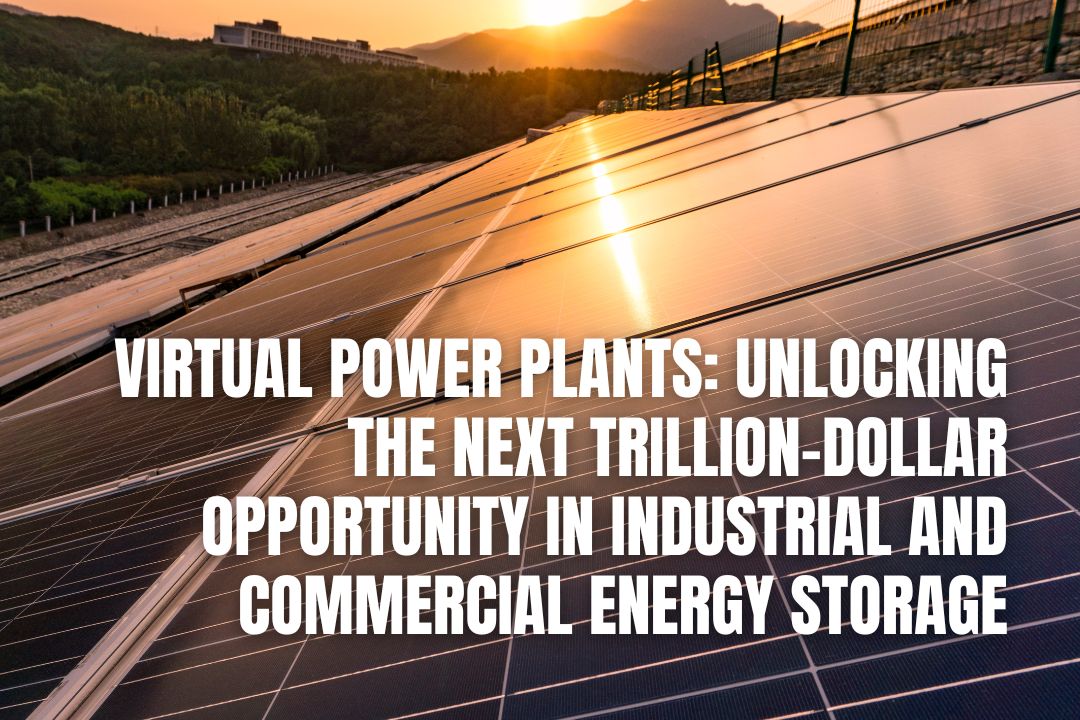August 11, 2025

Virtual power plants (VPPs) are a big deal for industry and commercial players. They pull together all sorts of energy resources, letting users get a grip on their energy use in ways that just weren't possible before.
Here’s a look at what’s driving this market and why energy storage is right at the heart of this emerging sector.
A virtual power plant links up a bunch of smaller energy sources think rooftop solar, wind turbines, and stacks of batteries. All together, they work like one big power plant, but without the smokestacks.
VPPs can flex their output to match what’s needed, especially when everyone cranks up their AC or turns on the lights at once. By wrangling all these distributed energy resources (DERs), VPPs help keep the grid steady and push for cleaner energy.
The virtual power plant market soared to USD 4.6 billion in 2024 and may reach USD 23.98 billion by 2032, with a 37.70% CAGR, driven by renewables, energy storage, cost-cutting efforts, and decentralized grids creating new revenue opportunities.
So, what’s fueling all this momentum? Here’s the quick rundown:
Energy storage is kind of the backbone for virtual power plants.
For commercial and industrial users, systems like lithium-ion batteries let them stash away extra energy from renewables. That’s handy when the grid’s under stress or prices spike.
When demand jumps, businesses can tap into that stored energy instead of paying top dollar. It’s a win for the bottom line and helps steady the grid too.
Investing in storage just makes operations smoother and greener. As VPPs keep growing, the dance between storage and grid management is only going to get more interesting.
Virtual power plants lean on some pretty slick tech to bring everything together. Smart systems now tie in generation and storage with more brains and reliability than ever. Let’s dig into the core pieces making it all tick.
Distributed energy resources like solar, wind, and efficient appliances enable flexible VPPs with local control, reducing reliance on the grid.
Tech improvements ease connections, offering savings, a smaller carbon footprint, and enhanced grid stability by balancing supply and demand.
Batteries are crucial for VPPs, with advances in lithium, nickel, and cobalt tech boosting performance and lifespan.
They store excess energy during low demand and release it when needed, enhancing renewable integration. Better chemistries improve density, efficiency, reliability, and sustainability.
AI analyzes and predicts energy use to optimize generation and consumption in real time. Blockchain enables peer-to-peer energy trading with trust and transparency.
Digital platforms provide dashboards and insights, making energy management easier and more efficient.
Microgrids are scalable, resilient mini power plants that can operate independently or with the main grid, ensuring continuous power during outages.
Integrating them into VPPs enhances sustainability and benefits commercial and industrial users.
Renewables and electrification are rewriting the rules in energy. Together, they’re cutting emissions and making VPPs more effective at juggling resources.
If you’re backing renewables like solar and wind, you’re helping cut back on fossil fuels and greenhouse gases. Cleaner energy just feels right, doesn’t it?
New tech breakthroughs are making renewables more affordable and practical. The more people and businesses jump in, the bigger the impact for both the planet and the bottom line.
Wind energy is a solid pillar in the renewable mix. It can deliver steady power, and it scales up pretty well when needed.
Modern turbines are more efficient than ever. Smart grid tech helps blend wind energy into the mix, smoothing out supply and demand swings. It’s not perfect, but it’s getting better all the time.
Electric vehicles (EVs) are shaking up the energy world. As more folks go electric, VPPs can use those parked EVs as mini storage units.
Charging up at off-peak times helps the grid, and you might even save a few bucks. In the bigger picture, EVs can feed stored energy back into the grid when needed. It’s a two-way street that’s still evolving.
Industry and commerce are slowly trading in fossil fuels for electric everything. That shift means less pollution and, hopefully, lower energy bills.
Electric machines and smarter processes are catching on. This move also makes it easier to plug into VPPs and manage energy more proactively. It’s a step towards a future that’s a little more sustainable for everyone.
Grid operators are in the hot seat when it comes to making VPPs work. Policies and incentives matter, a lot. Strategies, infrastructure upgrades, tax breaks, and the move away from natural gas are all changing the landscape for energy storage.
Grid operators have to keep the lights on and the system balanced. With VPPs, they can pull in power from smaller sources like rooftop solar and batteries, especially when demand spikes.
Good communication between grid operators and VPPs is a must. Better forecasting and reliability are possible when everyone’s on the same page. The goal? A more flexible, tough grid that can handle surprises.
Upgrading the grid is essential for VPPs to succeed, requiring smarter transmission, charging stations, and storage.
Utilities seek government funding to reduce costs and improve service, making the grid more adaptable and future-ready. Old systems aren’t designed for this distributed energy revolution.
Tax credits from the IRA encourage businesses to adopt renewables and storage, strengthening the grid while creating jobs and fostering innovation in clean energy.
These incentives help companies transition faster to sustainable solutions, benefiting everyone.
The natural gas sector is shifting toward cleaner options like renewables and hydrogen.
VPPs help maintain grid reliability during this transition, balancing old plants with new energy sources, and supporting a more sustainable energy future through diverse strategies.